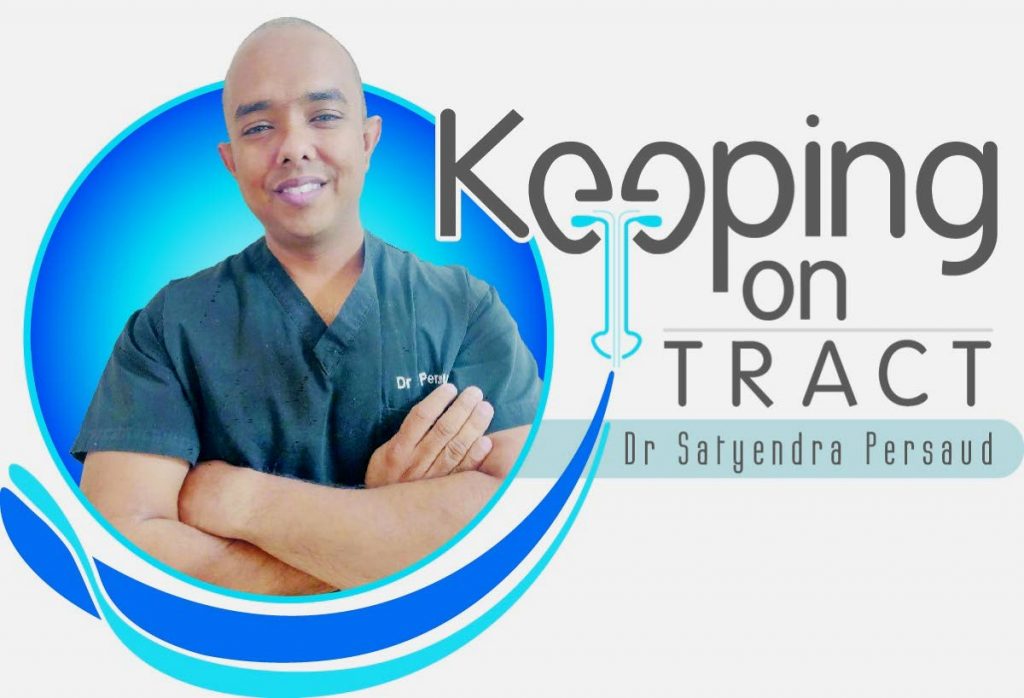Going too often: The overactive bladder

SATYENDRA PERSAUD
THE overactive bladder or OAB is quite common although most people are shy about discussing it. This syndrome refers to a group of symptoms including urinary urgency (or wanting to go really badly and feeling like you can’t hold it), frequency (wanting to go very often) and even leakage of urine.
How will your doctor evaluate you?
Your doctor should have a frank and thorough discussion about your symptoms. He/she will ask specific questions such as how long you have had these symptoms, how often you go and whether it hurts when you urinate. He/she will ask about other medical conditions you have or medication you may be taking. The aim of the evaluation is to identify any serious condition which may mimic the overactive bladder. There should be a physical examination as well. Additionally, a urine test should be obtained to make sure there is no blood in the urine or signs of infection. He/she may ask you to fill out a detailed chart of your intake and output over a few days including what and how much you drink and how much urine you pass. Basic blood tests will be done looking for conditions such as diabetes.
What other tests are done?
The doctor may get a scan of the bladder to see whether you are emptying your urine completely. This is called a post micturition volume or a post void residual volume. Depending upon your symptoms, you may require imaging tests of your kidney such as an ultrasound or even the passage of a camera into the bladder to have a look. Occasionally a special test is done to investigate your bladder function in great detail including at what point you get the urge to void and what the pressures are in your bladder during voiding – this is called urodynamic testing.
What are the treatment options for the overactive bladder?
OAB is essentially a diagnosis of exclusion and if other conditions are found during evaluation, such as an infection, these will be treated appropriately. Treatment of OAB takes a stepwise approach. There are simple lifestyle changes you can adopt that you may find beneficial. Losing weight and avoiding bladder irritants like caffeine (found in tea, coffee and many fizzy drinks) are a good start.
You may also be referred to a specialist to discuss exercises that strengthen the pelvic floor and to teach you ways that you may train yourself to hold your urine for progressively longer periods over time.
Basic medical management of OAB starts with medication to help relax the bladder. There are different classes of drugs which are used but in Trinidad, the anticholinergics are most commonly used – this fancy term simply means it acts to prevent the bladder from contracting. Not all patients are suitable for these and you should let your doctor know if you have a history of constipation, bowel problems or glaucoma. The other pill used belongs to a class of drugs called Beta agonists and also reduce bladder contractions albeit by another mechanism – this drug is not available locally.
What is lifestyle changes and medication do not work?
Most people will see some improvement with lifestyle changes and medication. If you do not, there are still options. Unfortunately, availability of these techniques is limited locally. Percutaneous tibial nerve stimulation uses fine needles to apply a low current around the ankle to stimulate the nerves – these nerves communicate with the nerves that control urination and stimulation over time may help with symptoms. Treatment will take a few months and you will require “top ups”.
In sacral neuromodulation, a stimulator is implanted next to the spine to stimulate the bladder nerves as they leave the spine. A trial phase is done first and if successful, the device is implanted. It carries a battery that lasts five years and will need replacement. This surgery involves going to sleep.
The other option injection of botulinum toxin such as Botox into the bladder to stop the contractions. A long, thin needle is used to inject small amounts of the drug at around 20 sites on the inside of the bladder. This requires no cut, can be done as a day case under local anaesthesia and each injection lasts around six months, although results may vary. It is important to know that in a one in ten patients, the injection may cause the bladder to stop contracting altogether and you may be unable to pass water – you will have to use a catheter to empty the bladder for a few months until the injections wear off.
Dr Satyendra Persaud DM (Urol) FCCS FRCS (Eng) is a consultant urologist at San Fernando General Hospital. He is a lecturer in urology at University of the West Indies (UWI) and is responsible for co-ordinating urology training at UWI.


Comments
"Going too often: The overactive bladder"